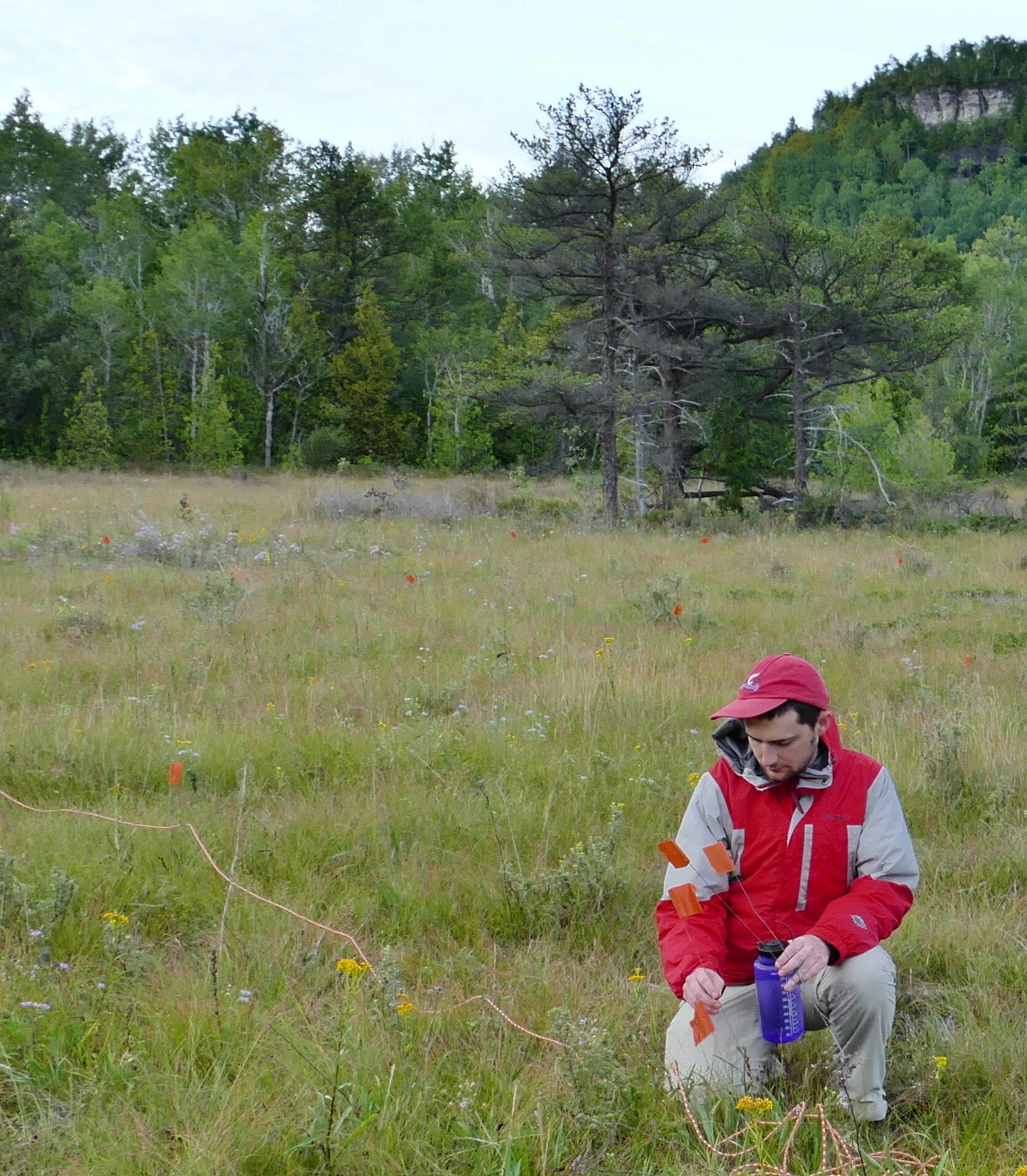N. Bard, Cabot Head, Ontario, Canada
Nick bard (MS, 2018)
Endemic taxa, such as the imperiled, and narrowly distributed edaphic endemic Carex scirpoidea subsp. convoluta, may be threatened by loss of genomic diversity, which can lead to extirpation and extinction. I am using ddRADSeq to describe population genomic structure and phylogenomic relationships among 11 North American populations of subsp. convoluta and subsp. scirpoidea. My results reveal that subsp. convoluta harbors relatively high levels of genomic diversity and significant structure. Phylogenomic analyses suggest that differentiation of subsp. convoluta is at an early stage and that it arose from Eastern North America periglacial refugial populations of subsp. scirpoidea.
A. Dignan, Highline Canal, Denver (Image courtesy of Denver Botanic Gardens)
Audrey dignan (MSES, 2019)
I am using natural history collections to assess variation in follicle pubescence, a key diagnostic character for the P. opulifolius species complex. As first suggested by Rydberg, follicle pubescence exhibits a strong geographic signal. An eastern, glabrous (or nearly so) form occurs in temperate forests of the Appalachian, Atlantic Highlands of New England, and eastern Great Lakes Region (P. opulifolius s.s.), while a western, densely pubescent form occurs in the Interior Highlands, Driftless Area, and western Great Lakes region, with disjunct populations in the Sand Hills of Nebraska, Black Hills of South Dakota, Front Range of Colorado, and Sierra Madre Orientale (P. intermedius). My findings have implications for downstream systematics research (e.g., floristics, niche modeling, phylogenetics), as well as the historical biogeography of the Southern Rockies and southwestern US.

